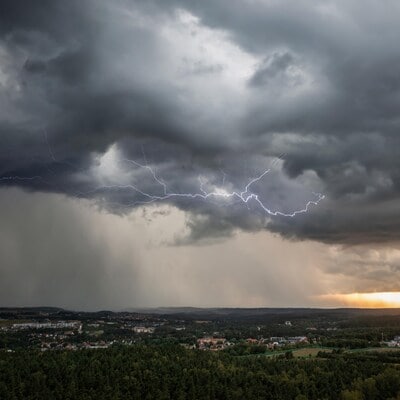Hurricane Beryl strengthened on Monday as it moved toward the Caribbean’s Windward Islands, threatening devastating flooding and storm surge amid accelerating life-threatening winds, officials said.
As the storm approached, people across a wide swath of the eastern Caribbean closed stores, stocked up on food and fueled their vehicles.
Click here to connect with us on WhatsApp
“This is an extremely dangerous and life-threatening situation. Act now to save lives!” US
In its latest advisory, the National Hurricane Center urged residents of Grenada, the Grenadines and Carriacou, where Beryl made landfall according to the NHC, to evacuate as winds were expected to rapidly intensify.
Beryl’s rapid growth marks an unusually ferocious and early start to this year’s Atlantic hurricane season, making it the earliest on record for a Category 4 storm, according to NHC data.
St. Vincent and the Grenadines Prime Minister Ralph Gonsalves said he expected the natural disaster could last for several days.
In the capital, Kingstown, conditions around the main port worsened on Monday morning, with reports of increasing winds damaging buildings. Video from Kingston showed waves crashing over breakwaters and lashing palm trees along the shore.
Beryl, a Category 4 storm on the Saffir-Simpson scale, was expected to have maximum sustained winds of 140 mph (225 kph) with slightly stronger gusts and was located about 35 miles (56 km) northeast of Grenada.
Beryl is moving west-northwest at 20 miles per hour (32 kph) and is expected to move toward the Gulf of Mexico by Wednesday, crossing many of the central Caribbean’s most populous islands, the NHC said.
The center said the hurricane’s center could bring “potentially catastrophic wind damage” as it passes through parts of the Windward Islands, with St. Vincent and the Grenadines and Grenada most at risk.
A Reuters journalist covering Grenada reported that there was a power outage across the island.
“Some sense of relief”
There were reports of damage including roofs being torn off buildings in the Prospect area of St. Vincent, as well as power outages in other parts of the island.
Hurricane warnings were issued for Barbados, Saint Vincent and the Grenadines, Grenada and Tobago. Tropical storm warnings were in effect for Martinique, Trinidad and Saint Lucia, and storm watches were in effect for parts of the Dominican Republic and Haiti.
Tobago has opened evacuation centres, closed schools on Monday and cancelled elective surgeries at hospitals, officials said.
“The eastern side of the island has been the hardest hit and the sea remains dangerous. Fishermen received ample warning and were able to pull their boats from the sea,” said Curtis Douglas, president of the All Tobago Fishermen’s Association.
Damage to hotels on the island has so far been reported as limited, according to local hotel and tourism organizations.
The hurricane is expected to bring 3 to 6 inches (8 to 15 centimeters) of rain to Barbados and the Windward Islands throughout the day on Monday, with some areas seeing up to 10 inches (25 centimeters), particularly in the Grenadines and Grenada.
In May, the National Oceanic and Atmospheric Administration predicted that the Atlantic would experience more hurricane activity than usual this year, due in large part to record-warming ocean temperatures.
In a video posted early Monday from a hotel in Barbados, where he is on holiday, Canadian travel blogger Nauman Kahn said the past two hours had seen some of the strongest and “really huge waves” in the Atlantic.
He said he had been in discussions with local residents: “Just knowing that people are taking it calmly, that this is part of life in the West Indies, gave us some peace of mind.”



